October 14, 2017
List of Blogs
|<
<
>
>|
Tags
Milkweed
Butterflies and Moths
|
|
If you Want Butterflies and Birds, You Need Caterpillars
|
|
Gardeners have become increasingly aware that if we want wildlife in our gardens, we must support
all of it's life stages, year round. We must provide food (native plants!), shelter, and habitat
for not only the beautiful butterflies, but their fabulous caterpillars as well; for the beautiful
birds as well as their delicate chicks.
|
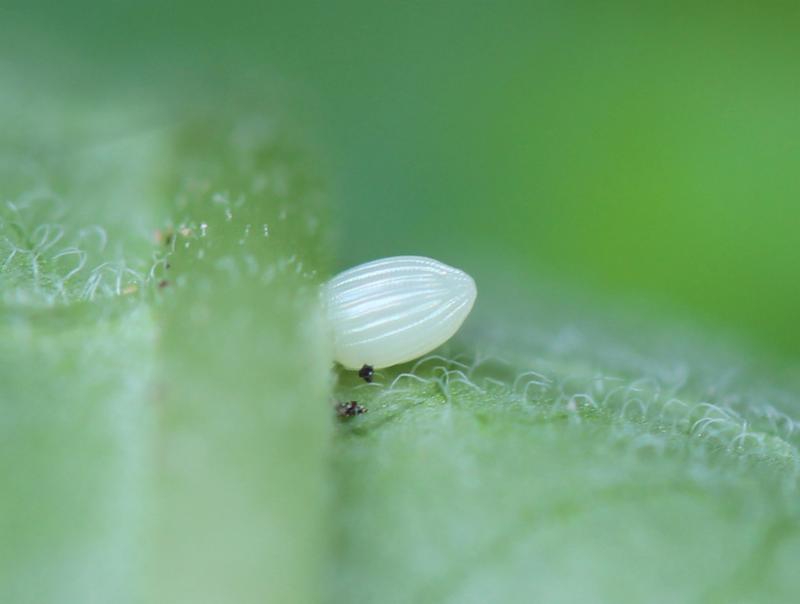
Monarch Butterfly (Danaus plexippus) egg
on Common Milkweed (Asclepias syriaca)
|
|
Most butterflies and moths that we so admire have caterpillars that feed on plants,
and most baby birds are fed on caterpillars, other insects, and even spiders.
By planting native plants, we restore the balance of nature in our gardens and create a
chain of events that leads to more wildlife. Non-native plants simply cannot do this -
they are not host plants for our Swallowtails, Metalmarks, Darts, Hawkmoths, Owlets and all the rest.
They will produce few if any caterpillars to live on as butterflies and moths,
or become meals for hungry birds or chicks.
|
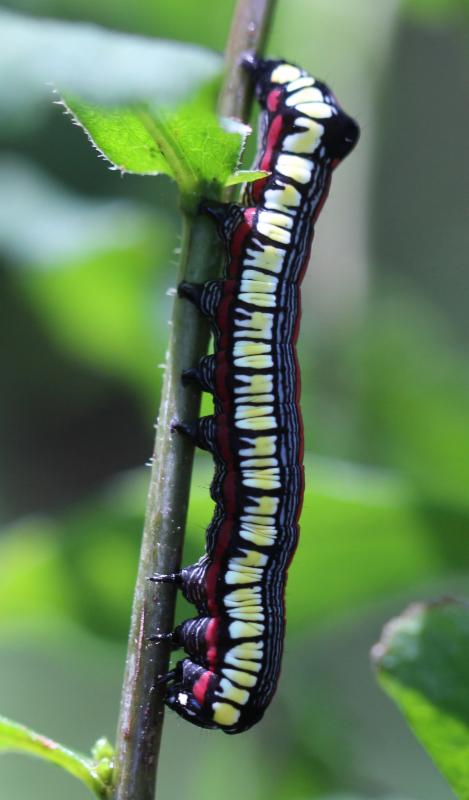
Brown Hooded Owlet Caterpillar (Cucullia convexipennis)
on Aster (Symphyotrichum sp.)
|
|
Native Plants are Critical
Monarchs Butterflies (Danaus plexippus), with their amazing migration, have long been the
darlings of the native plant movement. There has been a great deal of education about the importance
of Milkweed to Monarchs, as well as the need to create suitable habitat. It is not enough to simply
put out pretty flowers for the adults to feed on, although nectar for adults is certainly a critical
part of the equation. Monarchs, like many butterflies, will feed on a wide range of nectar bearing flowers.
It is their young, their caterpillars, that MUST have Milkweeds to feed upon.
|
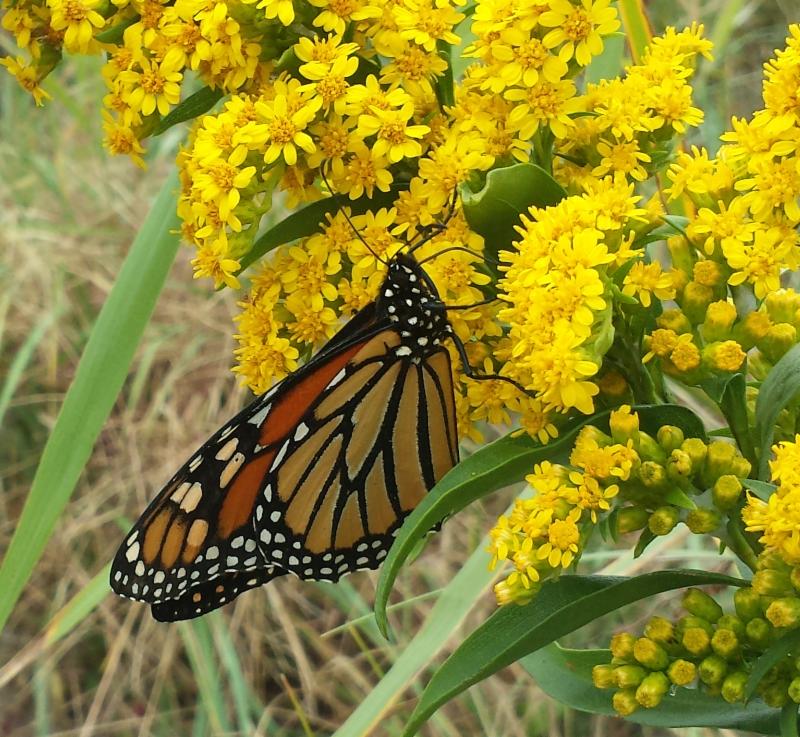
Monarch (Danaus plexippus) nectaring on Seaside Goldenrod
(Solidago sempervirens) last Monday in Cape NJ preparing to fly across the Delaware Bay
|
|
But Monarchs are only one of the many species of that rely upon a particular host plant.
What about all of the others? We have hundreds of Butterflies in North America (the folks at the
North American Butterfly Association, NABA, tell us there are about 725 species) and literally
thousands of species of moths (as many as 12,000!). Many of these insects require specific host
plants for their survival. White M Hairstreaks (Parrhasius m-album) are one of the many
butterflies and moths that must have oaks for their caterpillars.
|
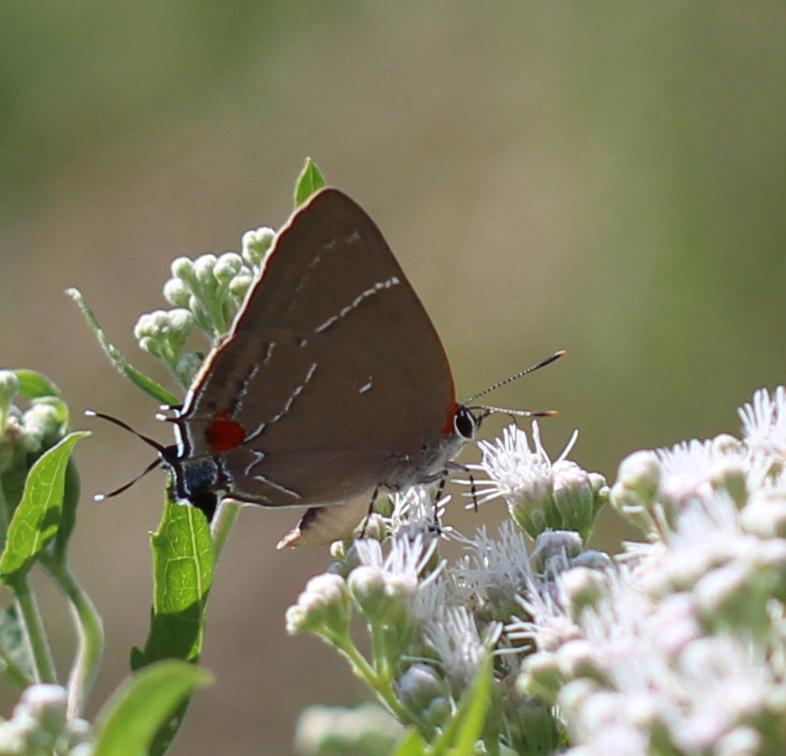
White M Hairstreak (Parrhasius m-album) nectaring on
Late Flowering Boneset (Eupatorium serotinum)
|
|
Red Banded Hairstreaks caterpillars prefer Winged Sumac (aka Shining Sumac) (Rhus copallina)
and Staghorn Sumac (R. typhina).
|
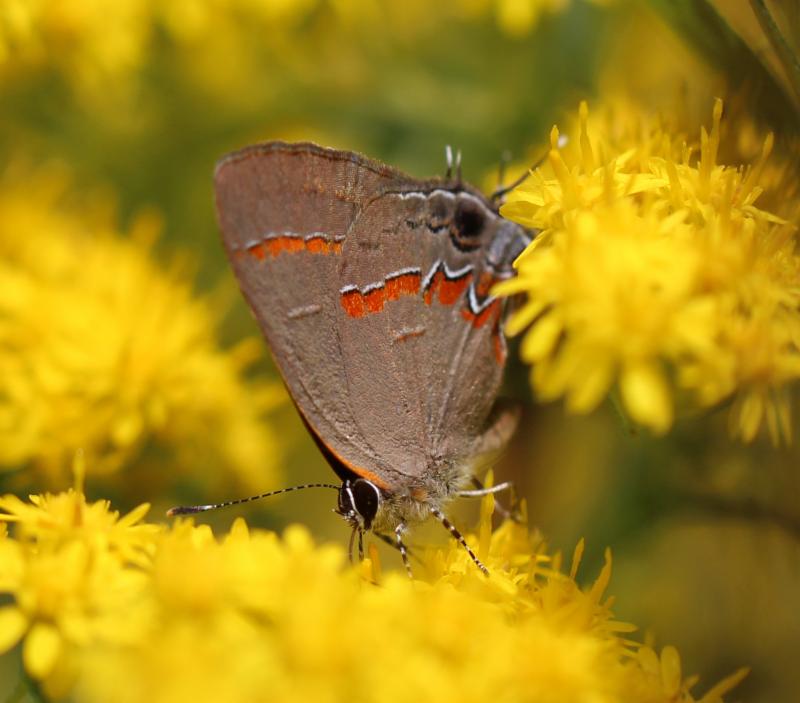
Red Banded Hairtreak (Calycopis cecrops)
on Late Goldenrod (Solidago gigantea)
|
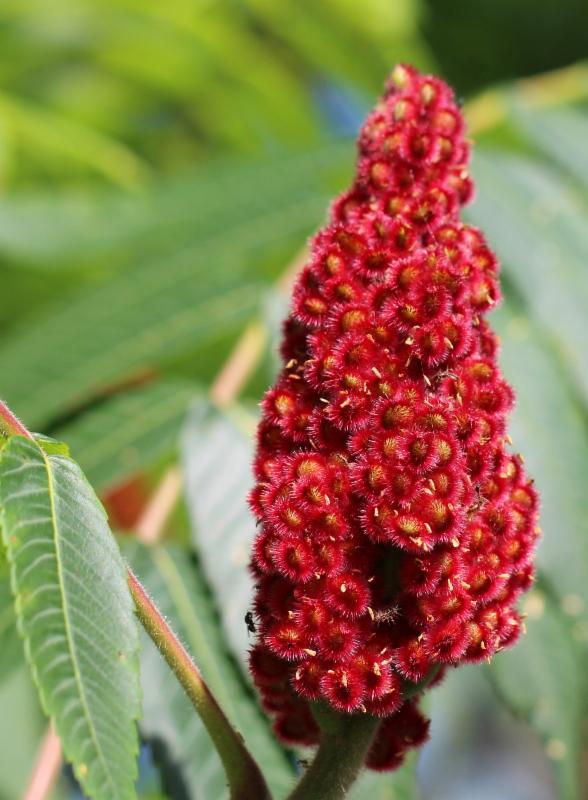
Staghorn Sumac (Rhus typhina)
|
|
Lovely Surprise!
One of the many species we have been working on is the Appalachian Gooseberry
(Ribes rotundifolium). It grows wild along our woods edge and we just started
propagating it 2 years ago. It is a terrific native fruit adapted to dry,
rocky woodlands. We had a bit of a surprising setback, however, when a bunch of hungry
Gray Comma caterpillars (Polygonia progne) showed up on our seedlings and enjoyed themselves!
|
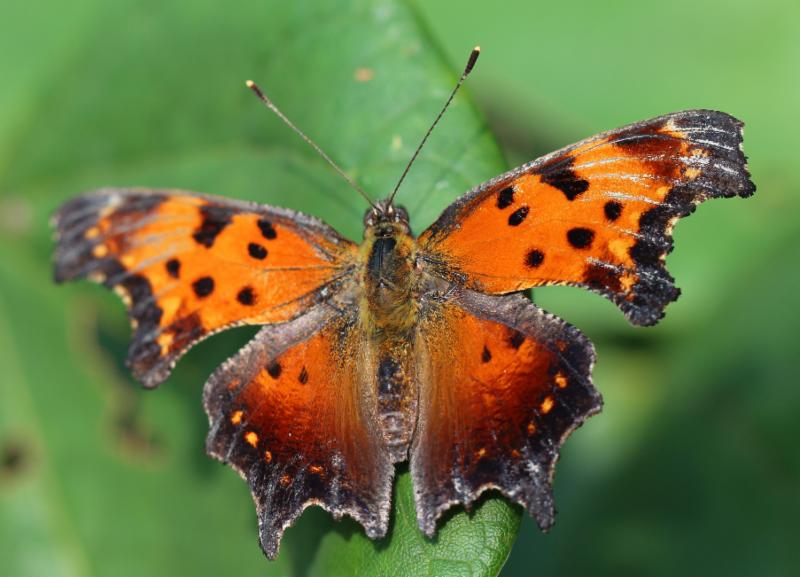
Gray Comma Butterfly (Polygonia progne)
|
|
Although the Eastern Comma Butterfly (Polygonia comma) is quite common in our area
(they rely on Elms [Ulmus sp.], Hops [Humulus sp.] and Nettles
[Urtica, Boehmeria, and Laportea sp.] to rear their caterpillars)
the Gray Comma is pretty rare in our neck of the woods, and we were exceedingly glad to see them.
|
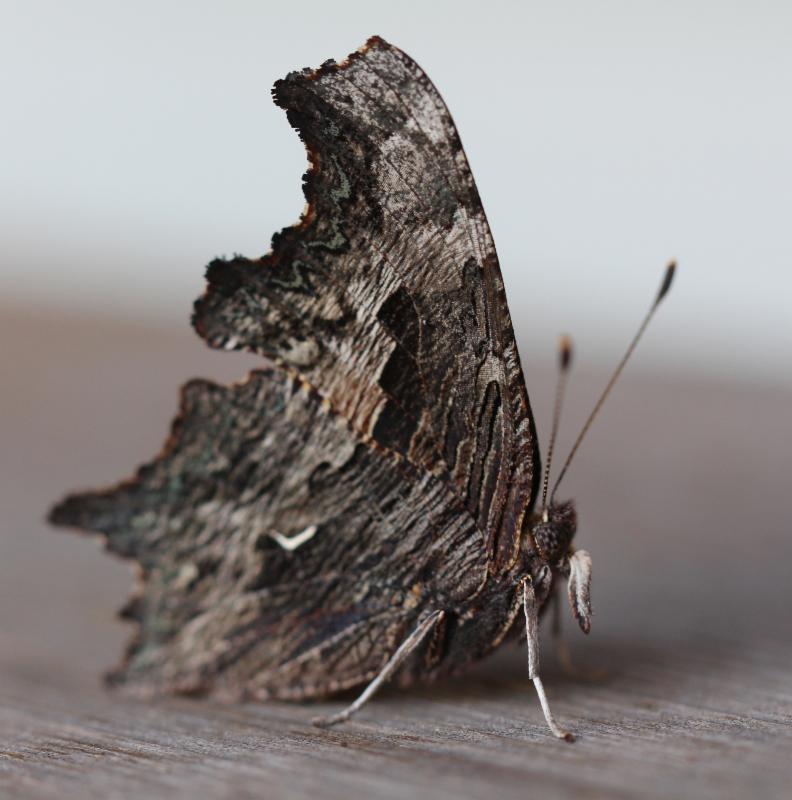
See the 'comma' on this Gray Comma?
|
|
Their caterpillars only feed on Gooseberries (Ribes sp.), you see. No Gooseberries, no Gray Comma's.
A nearby population of this butterfly had been recorded in 2013 (at Horseshoe Bend Preserve).
We had spotted this adult last year here at Toadshade, so we had hoped that we might have our own
breeding colony. We're just tickled pink that we actually do!
|
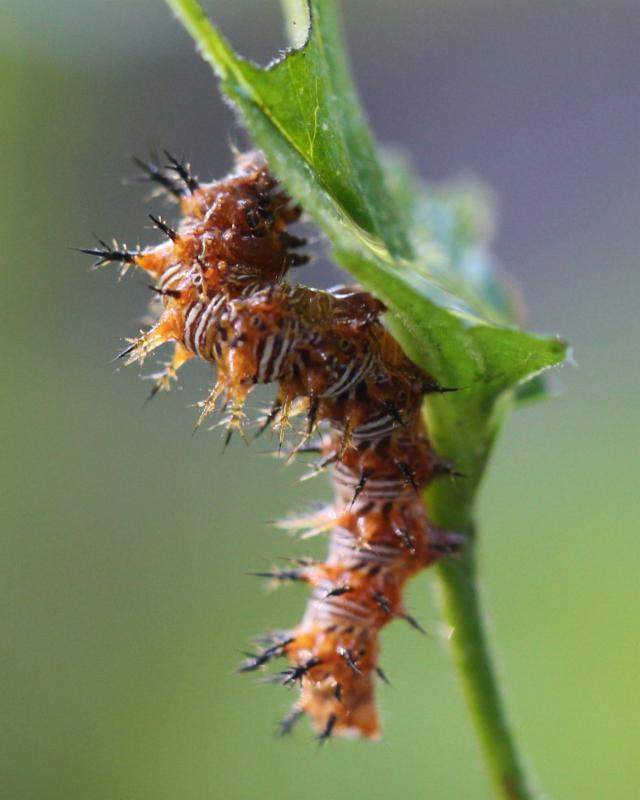
Gray Comma caterpillar!
|
|
So if you plant it, will they come?
By planting native plants, will you actually attract all sorts of butterflies, moths, birds and other wildlife to
your garden to rear their young? The answer to this is yes, but depending upon what is nearby it may take some time.
Certainly if you do NOT plant native host plants and provide critical habitat, they will NOT come. I spoke to a woman
this summer who had planted a small patch of Milkweed and was dismayed that she had not seen any monarchs. I asked
what was nearby - were there any nectar plants for the adults, any cover, any habitat?....and sadly she told me no.
I told her to have patience and lo and behold, several weeks later she contacted us and was very excited that
she had monarch caterpillars on her milkweeds!
|
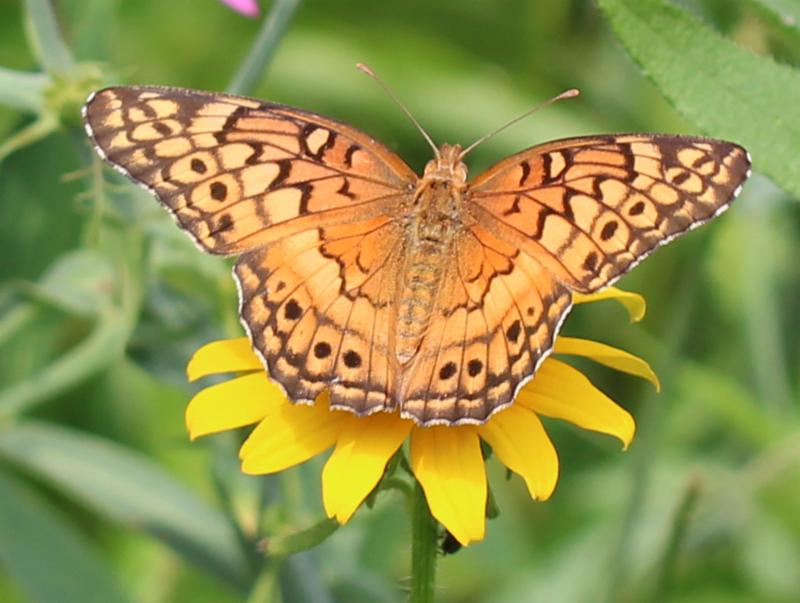
Variegated Fritillary (Euptoieta claudia)
on Brown-eyed Susan (Rudbeckia hirta)
|
|
Most insects, however, do not travel for miles and miles to locate a host plant. For the most part,
the butterflies, beetles, hawkmoths, and native bees that you find visiting your garden have come
from somewhere nearby and have discovered your little patch of native habitat. The more patches, swaths,
and fields of native plants we have, the more we support wildlife. By creating a patchwork of habitats
from our parks, gardens, woodlands, and hedgerows, the easier it is for wildlife to move, colonize new areas,
and expand their range when the opportunity presents itself in the form of restored habitat - whether that
habitat is a large park, or a small garden in your yard or at your office . All the more reason to have
native plants on hand so that you, too, may support full life cycles - providing food (native plants),
shelter, and habitat for the young (caterpillars), as well as the old (butterflies and moths), and
making a lot of insect eating birds and nestlings happy and well fed along the way.
|
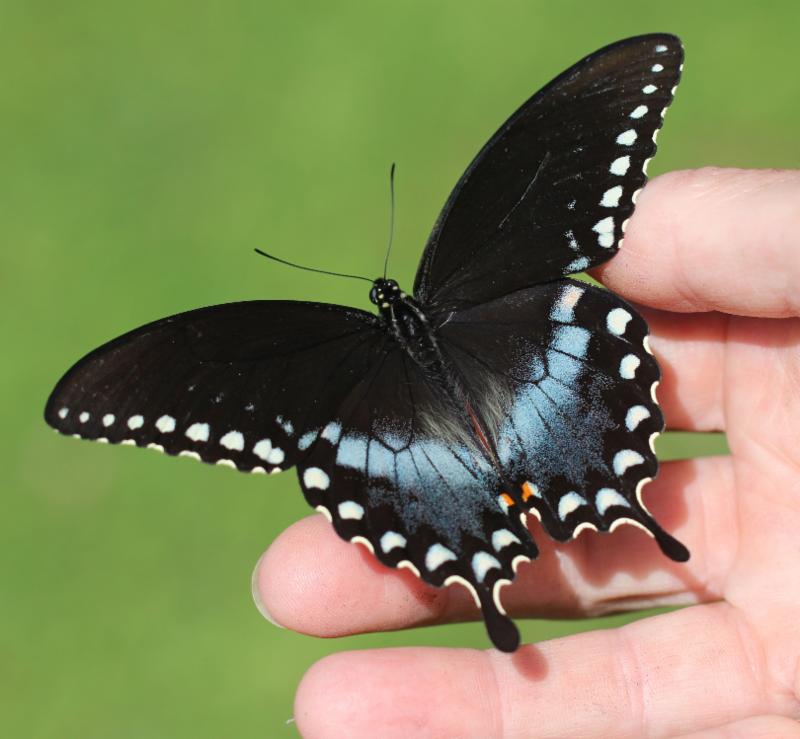
Spicebush Swallowtail (Papilio troilus)
|
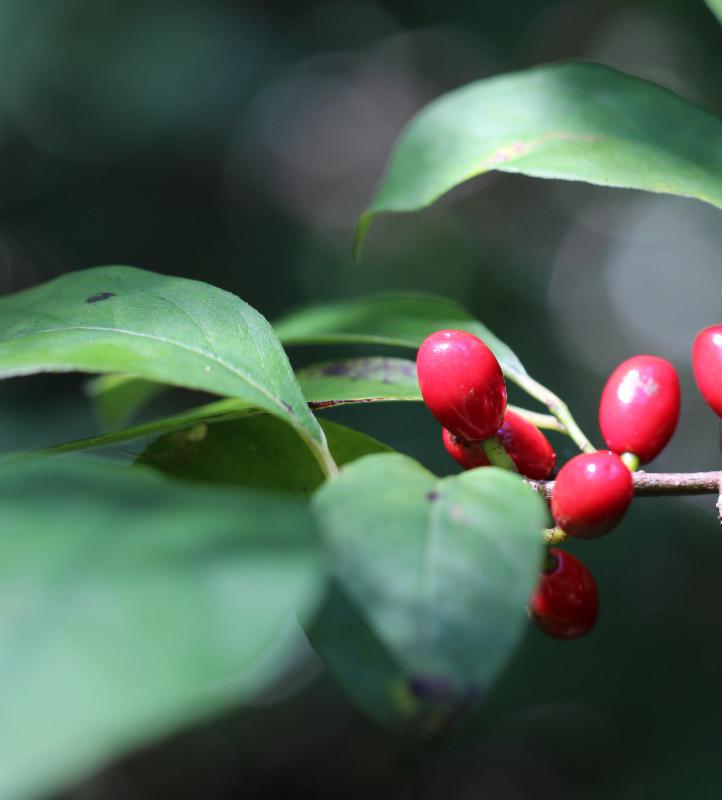
Spicebush (Lindera benzoin)
|
|
Looking for Trees, Shrubs and Vines??
Fall is a terrific time to plant perennials of all sorts - herbaceous perennials, ferns, shrubs, and even trees!
As I mentioned above, we are always working to provide more species of locally native plants. This fall we've put
together a list of all the woodies that we currently have available. In addition to the plants we have listed on
our web site www.toadshade.com, we have small numbers of other woody species on hand as well.
|
|
|



